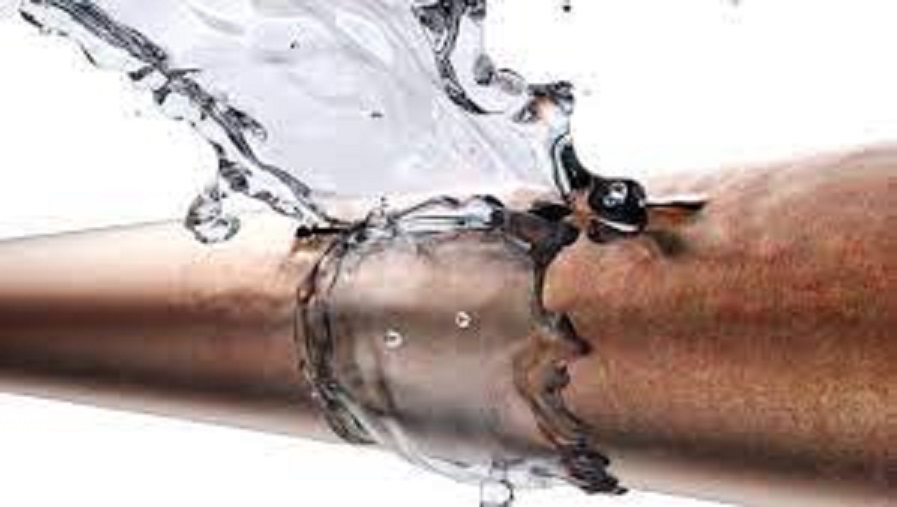
Why water hammer phenomenon is so important?
The water hammer phenomenon is an important issue. Because it can cause significant damage to water supply systems if not properly addressed. The sudden changes in pressure caused by water hammers can lead to pipe ruptures, leaks, and other failures. That can result in expensive repairs and downtime.
Moreover, water hammers can pose a safety risk in certain situations. For example, in industrial settings, water hammers can cause equipment to malfunction or fail, potentially leading to accidents or injuries. In healthcare facilities, water hammers can interfere with sensitive medical equipment, and in laboratories, it can damage or contaminate experiments.
Therefore, it is crucial to take measures to protect water supply systems from water hammers. Such as installing surge tanks and pressure relief valves. As well as properly maintaining the system and using software programs to compute the potential for the water hammer. By doing so, the risk of damage, downtime, and safety hazards can be minimized. Ensuring the smooth and safe operation of the water supply system.
What is the water hammer?
A water hammer is a phenomenon that occurs when there is a sudden change in the velocity or direction of water flowing through a pipe network. This can create pressure surges that can cause damage to the pipes, valves, and fittings. A water hammer can also be a significant source of noise in a water supply system. The importance of protecting pipe networks from water hammers cannot be underestimated. The damage caused by water hammer can lead to leaks, bursts, and other failures in the system, resulting in expensive repairs and downtime.
In addition to installing protective measures, it is also important to properly maintain the pipe network to prevent water hammer. This includes regularly inspecting the pipes for signs of wear or damage, keeping valves and fittings in good working order, and ensuring that the system is properly balanced to avoid pressure imbalances.
How to make a computation of a water hammer?
The computation of a water hammer involves determining the potential for pressure surges that can occur in a water supply system due to sudden changes in the velocity or direction of the water flow.
To perform a water hammer computation, the following steps are typically followed:
- Mathematical model of the water supply system: The first step is to create a model of the water supply system using the software program. This involves inputting the dimensions, materials, and other properties of the pipes, valves, pumps, and other components of the system.
- Define the boundary conditions: The next step is to define the boundary conditions of the system. Such as the flow rate, pressure, and temperature of the water at the inlet and outlet points.
- Define the transient event: The transient event is the sudden change in the water flow that causes the water hammer. This could be, for example, the rapid closure of a valve or the sudden start-up or shutdown of a pump.
- Run the simulation: Once the system is modeled and the boundary conditions and transient events are defined, the simulation is run. The program calculates the pressures and velocities of the water at various points in the system over time, taking into account the effects of inertia, friction, and other factors.
- Analyze the results: The results of the simulation are then analyzed to determine the potential for water hammer and the risk of damage to the system. If necessary, modifications can be made to the system design or operating conditions to reduce the risk of water hammer.
In summary, water hammer computation involves modeling the water supply system using specialized software programs.
How it is important computation vs. measurement in situ?
Both computation and measurement in situ are important for addressing water hammer in water supply systems.
Computation involves using software programs to simulate the behavior of the system and calculate the pressures and velocities of the water at various points in the network. This approach is useful for predicting the potential for water hammer and identifying areas of the system that may be at risk. It can also be used to test the effectiveness of different mitigation strategies. Such as the installation of surge tanks or pressure relief valves.
On the other hand, measurement in situ involves taking physical measurements of the pressures and velocities of the water at various points in the system using pressure gauges or flow meters. It can also be used to fine-tune the system parameters and ensure that the mitigation strategies are working effectively.
While computation and measurement in situ are both important, they have different strengths and limitations. Computation can provide a comprehensive analysis of the system behavior and allow for the evaluation of different scenarios and mitigation strategies. However, it relies on accurate inputs and assumptions, and may not always capture all the nuances of the real-world system. Measurement in situ, on the other hand, provides direct and accurate data on the behavior of the system but may be limited by the availability of measurement points and the ability to access them.
In practice, a combination of computation and measurement in situ is often used to address water hammer in water supply systems. Computational analysis can be used to identify areas of the system that require further investigation and help guide the selection of appropriate mitigation strategies. Measurement in situ can then be used to verify the results of the computational analysis and ensure that the system is operating as intended.


























